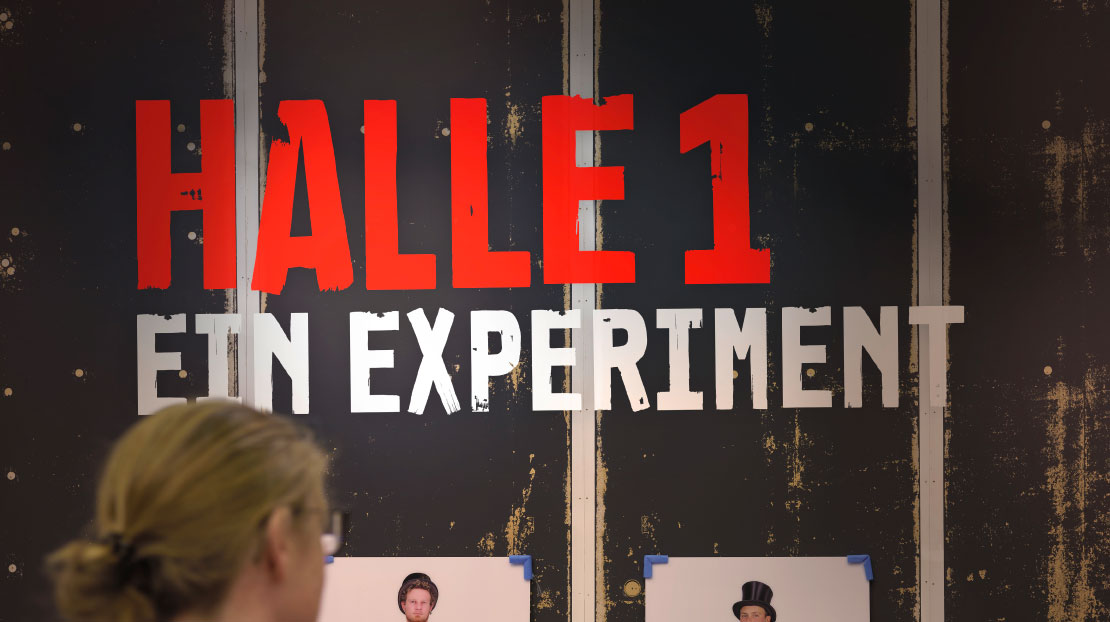Hall 1. An experiment

for german version click here
15. July - 1st November 2020
What do you do if plans suddenly change and the thing you have long been preparing for can’t happen? You need an alternative, a plan B! The GNM in Nuremberg was one of many facing this problem when the major special exhibition on Renaissance painter Hans Hoffmann had to be postponed by a year until the summer of 2021 due to coronavirus. The museum decided to use the free space unexpectedly at its disposal as a hub for new offerings. Around 40 exhibits are additionally presented contextualising alternative courses of action: life on the road and “Böttger” porcelain.
At the beginning of the 18th century, apothecary and chemist Johann Friedrich Böttger (1682–1719) said he was able to make gold, a claim which certainly caused people to prick up their ears. Elector of Saxony August the Strong took Böttger prisoner, provided him with an alchemy laboratory and demanded he produce the precious metal. In his desperation, Böttger began to collaborate with Ehrenfried Walther von Tschirnhaus. He didn’t find the recipe for gold, but he was instead able to present the formula for “white gold” – porcelain.
Before then, Europe had not been able to produce porcelain and therefore had to import the coveted treasures from China at great expense. Excellent recreations of Chinese originals such as a pagoda and a seated Buddha are shown in the exhibition opposite their prototypes. Teapots, cups and dishes also exemplify the perfection of Saxon products against the Chinese counterparts.
Böttger is attributed with creating Meissen porcelain, which is world-famous to this day. The production of porcelain was not his actual intention, but was nevertheless a fine alternative with lasting effects.
The second group of themes relates to life on the road. Today, journeymen and -women still traverse the country with neither mobile phone nor money. It is hard to say what will await them on their journey. They always need an alternative, their life is an experiment – but one that is exciting, rich in variety and free.
In addition to large-scale photographic works by Dominik and Benjamin Reding from the “Kluft & Haut” [clothes and skin] series of 2018/19, the exhibition features a historical hostelry sign, a welcome cup, the figure of a wandering journeyman from the 18th century and a valuable casket containing an in-memoriam card. The document specified the burial place and afterlife care for travelling girdle-maker apprentices who died far away from home. The examples tell of the risks, but also the long tradition, appeal and opportunities of a life that can only be roughly planned.
The exhibits place the focus on the positive aspects of experimental alternatives. Students of the “European Cultural History as Migration History” advanced seminar at the Friedrich-Alexander University Erlangen-Nuremberg, led by Prof. Hess, are currently studying the Böttger porcelain. Their results are presented in the exhibition hall, giving visitors a direct insight into their current research.
Space for events
Even with the distancing measures currently in place, the large Exhibition Hall 1, which measures around 1,000 square metres, offers sufficient space for events and inclusive campaigns that cannot currently be held elsewhere in the museum. Visitors are asked to write down the values and preferences that have changed for them as a result of the coronavirus crisis and pin their cards to the “values wall”. As a creative response to the face mask that is now part of our day-to-day life, the “protection wall” show objects people use(d) to protect themselves in the past and today: from rosary and knight’s helmet to tin foil hat and sun cream, the selection draws a line to examples in the permanent collection.
The GNM used the enforced closure due to coronavirus to develop its online offerings. In a studio in the exhibition hall, visitors can follow the creation of webinars, 3D scans and videos for the new GNM_kids blog live and access them all again online when they get home.
In a time of crisis, the GNM’s “Experiment in Hall 1” is setting an example for creativity and desire for the new.